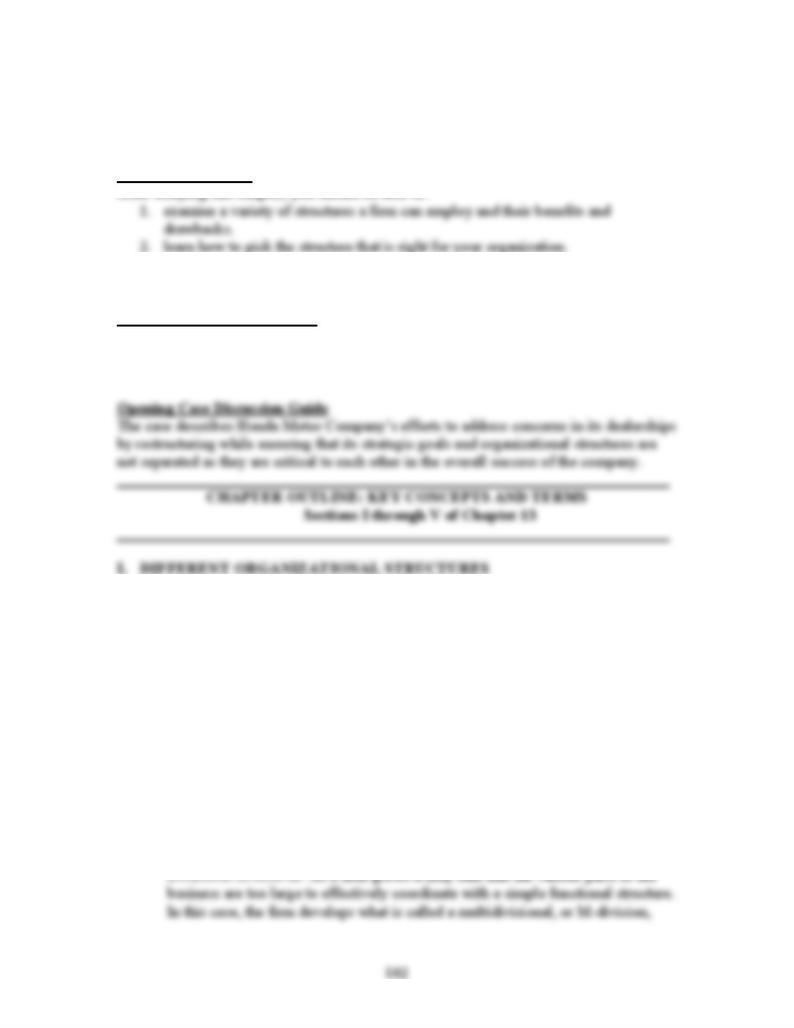
INTERNATIONAL MANAGEMENT Chapter 13: The Structure of the International Firm
Chapter 13
THE STRUCTURE OF THE INTERNATIONAL FIRM
Learning Objectives
3. understand and analyze issues surrounding restructuring firms, including firm
turnaround and reengineering.
General Teaching Suggestions
Identify few major international firms. Divide the class into teams. Assign a firm to each
team and research the organizational structure of each firm. Guide the discussion into the
concepts in the chapter.
1. Key Concepts
The need for different types of organizational structure is consistent with a firm’s
growth and evolution. As an enterprise becomes more complex there is a need for
its organizational structure to change, as the enterprise has more people and a
greater need to achieve coordination between its various units.
• Simple Structures: A simple organizational structure is typical of new ventures.
the firm’s founder/CEO is the center of the business and everything essentially is
coordinated through that founder. This business form can continue for a
considerable time even as a firm grows. The simple structure can often hinder
growth because the founder is limited in his or her ability to address numerous
firm details, as well as a host of other growth-related problems.
• Functional Structures: As a firm grows it may find that it needs greater
coordination; under these conditions, a firm often will move to a functional
organizational structure. In this structure, the firm organizes itself around the
organization’s major functions.
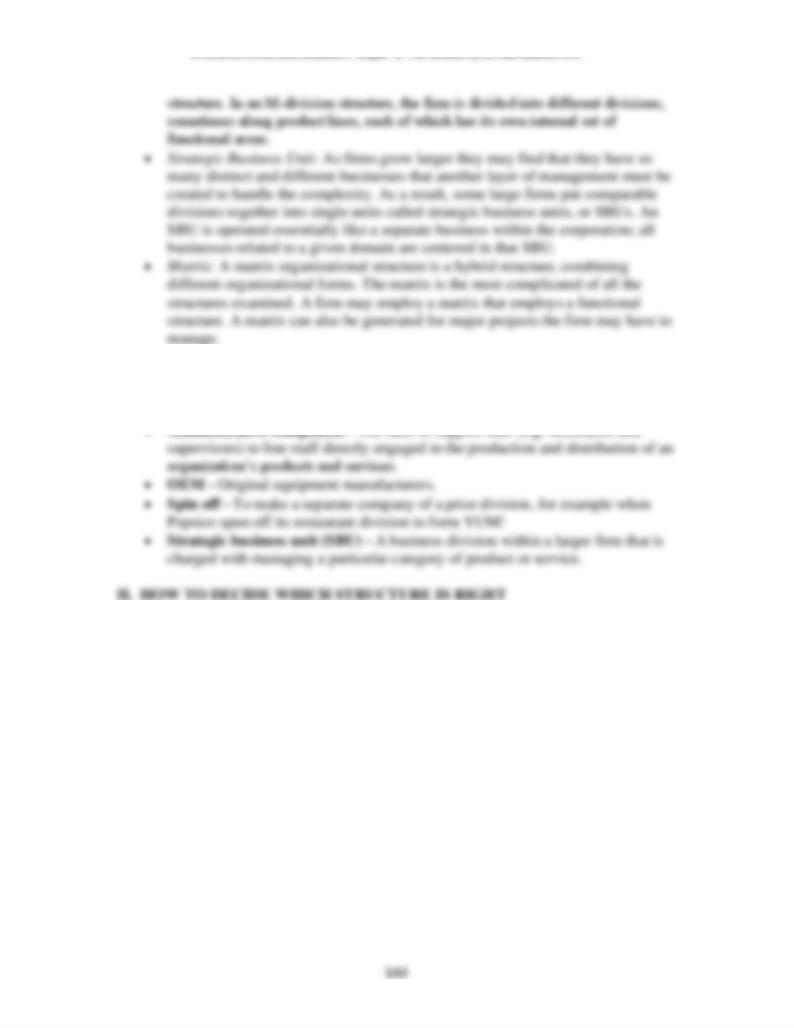
INTERNATIONAL MANAGEMENT Chapter 13: The Structure of the International Firm
2. Key Terms
• Organizational structure - The official manner in which the various parts of a
business are to report and coordinate with each other, and at what levels
decisions are made.
1. Key Concepts
Organizations need to adopt the structure that fits their situational factors because
this leads to higher organizational performance, and the organization needs to
look at a variety of factors to choose which may be the best structure. The issues
to consider include:
• Size: As an organization grows, new layers of management are introduced to
allow the various entities in the business to be controlled more effectively.
• Degree of Diversification: A large organization with activities which are strongly
related to each other is expected to have a functional structure or perhaps a
divisional structure based either on customers or geography. However, if a firm is
based on unrelated diversification, then it needs to have a structure that allows
the businesses to operate effectively on an independent basis, so it likely will
have a divisional structure based on product. Alternatively, if a firm is large and
highly diversified, then it could be expected to pursue an SBU form of
organization in which sets of businesses are connected but the businesses in the
SBU are independent of other business areas.
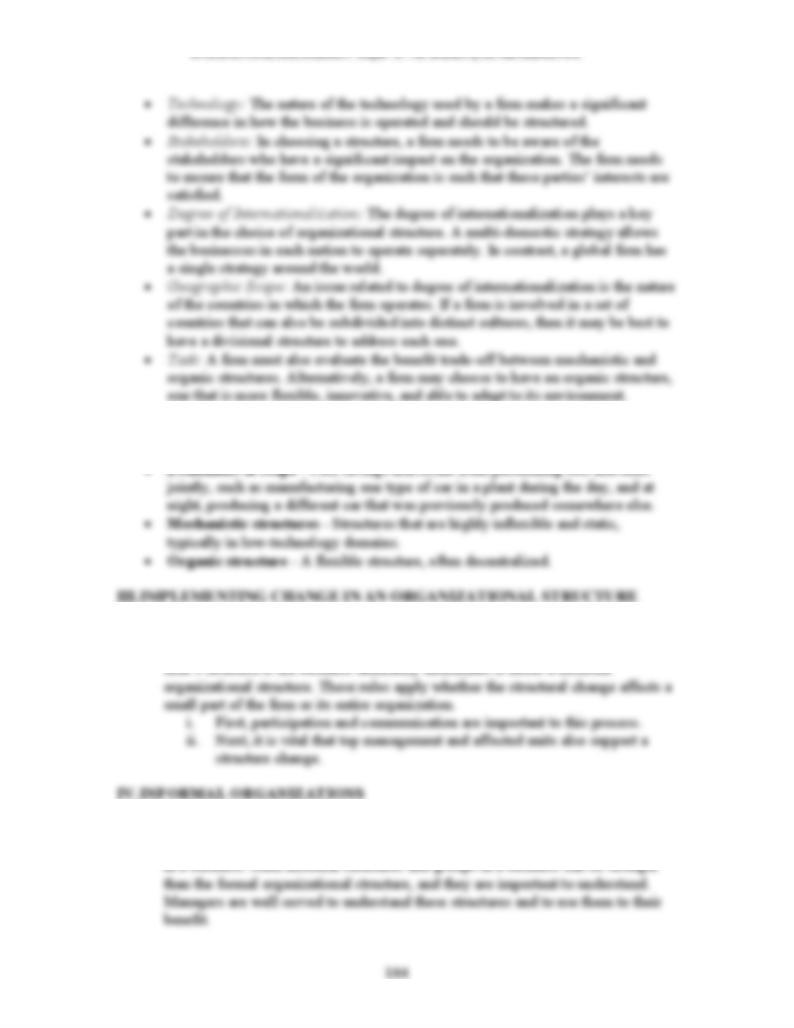
INTERNATIONAL MANAGEMENT Chapter 13: The Structure of the International Firm
2. Key Terms
• Economies of scale - Average unit costs decline as production quantity increases
over a limited period of time.
1. Key Concepts
There are a few fundamental rules that should underlie any efforts to change a
1. Key Concepts
Informal organizations are the unofficial connections that exist among individuals
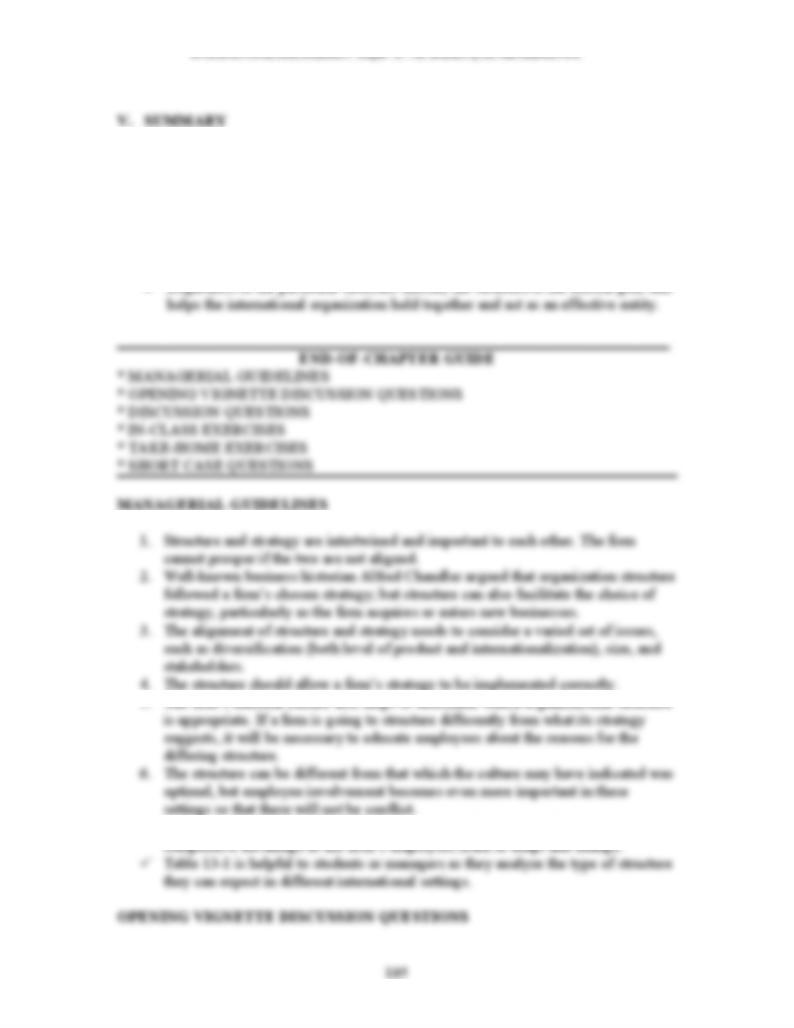
INTERNATIONAL MANAGEMENT Chapter 13: The Structure of the International Firm
1. Key Concepts:
• Organizational structure is a critical element to a firm’s success.
• There is no dogmatic answer about which structure is best. The key is for the
organization to match its structure with its given situation.
• International business increases the cultural and geographic distance between the
various units of the business, which makes the choices of structure that much
more difficult.
7. In mature organizations, the ability to create learning organizations can provide a
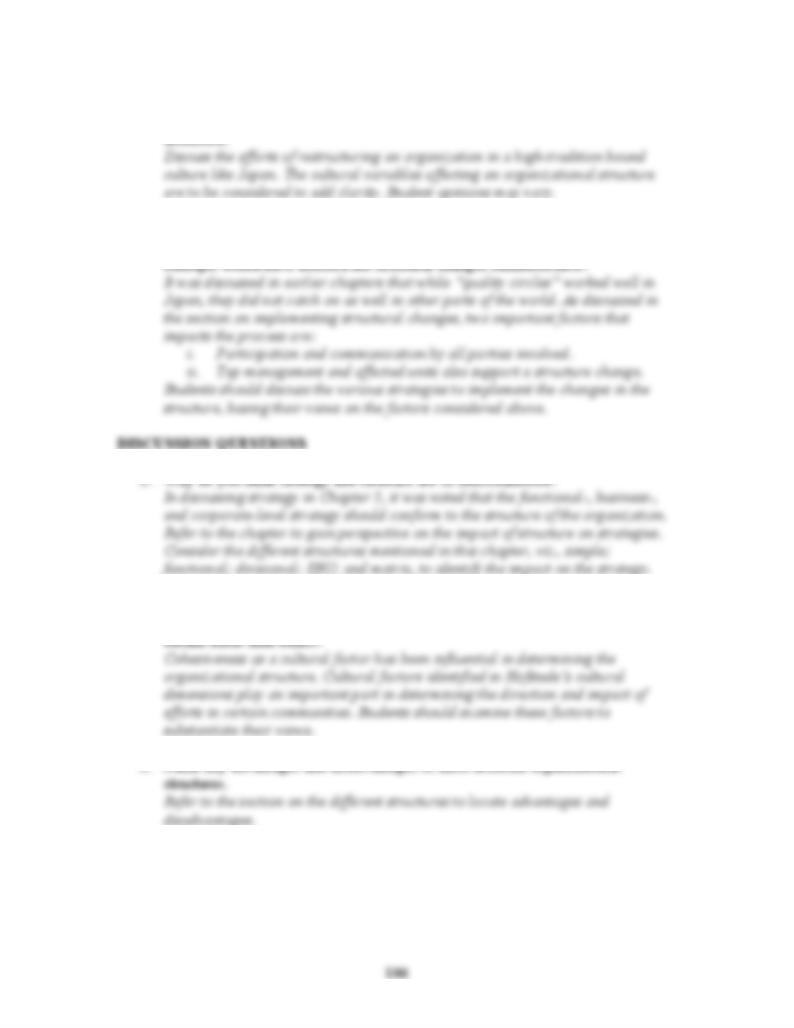
INTERNATIONAL MANAGEMENT Chapter 13: The Structure of the International Firm
1. Do you think Japan’s cohesive culture helped Honda make the structure changes
2. We previously looked at the work of Dr. Deming and the quality movement.
Japan has a strong interest in the concepts of quality. How do you think those
2. Referring to the discussion on ethnic communities, discuss why you think such
ethnic or religious minorities have been able to develop greater achievements in
4. Are there specific industries in which you would expect a matrix structure to do
particularly well?
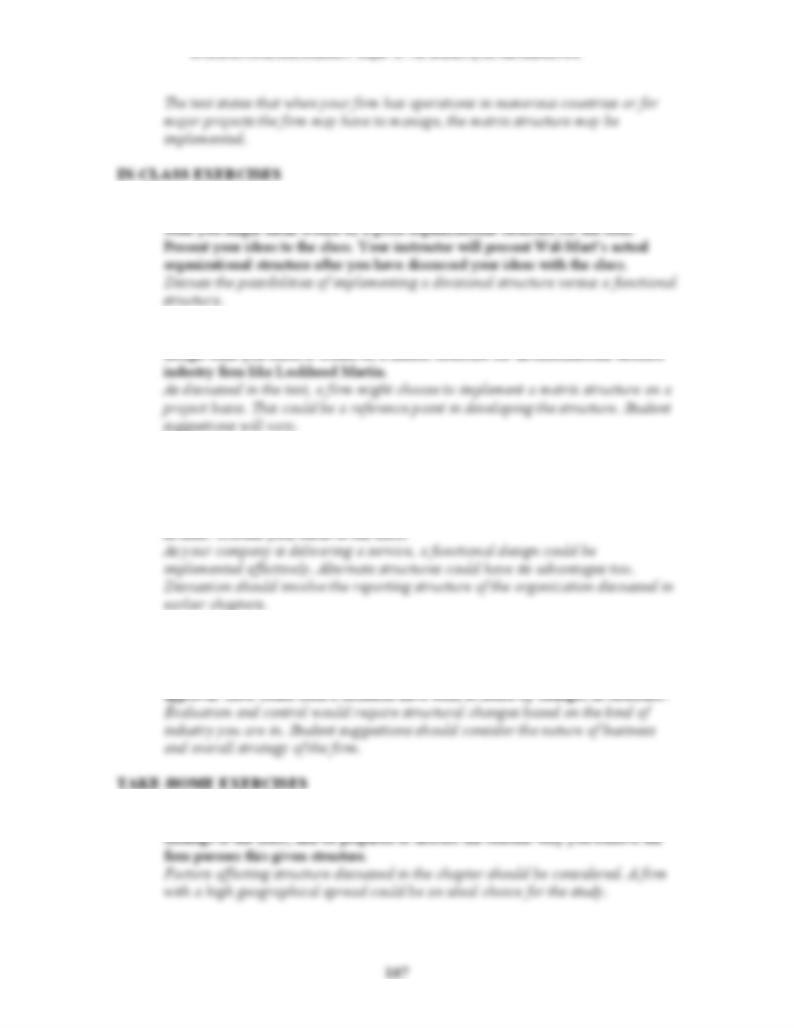
INTERNATIONAL MANAGEMENT Chapter 13: The Structure of the International Firm
1. Sam's Club is Wal-Mart's low-cost warehouse unit. Break into teams and design
2. Examine the concept of set-asides in the defense industry. Break into to teams and
3. Assume you and a team of other students from your school form a new firm that
quickly grows to 100 employees. The firm is an Internet company that designs
marketing programs for major international clients that are in the business of
selling oil-industry equipment. What should your structure look like at this point
4. In an earlier chapter we learned about the case involving the failure of Barings,
the British investment firm that fell into ruin when a single employee in
Singapore invested large sums of money without the firm’s knowledge or
1. Research the organizational structure of a Fortune 500 company. Present your
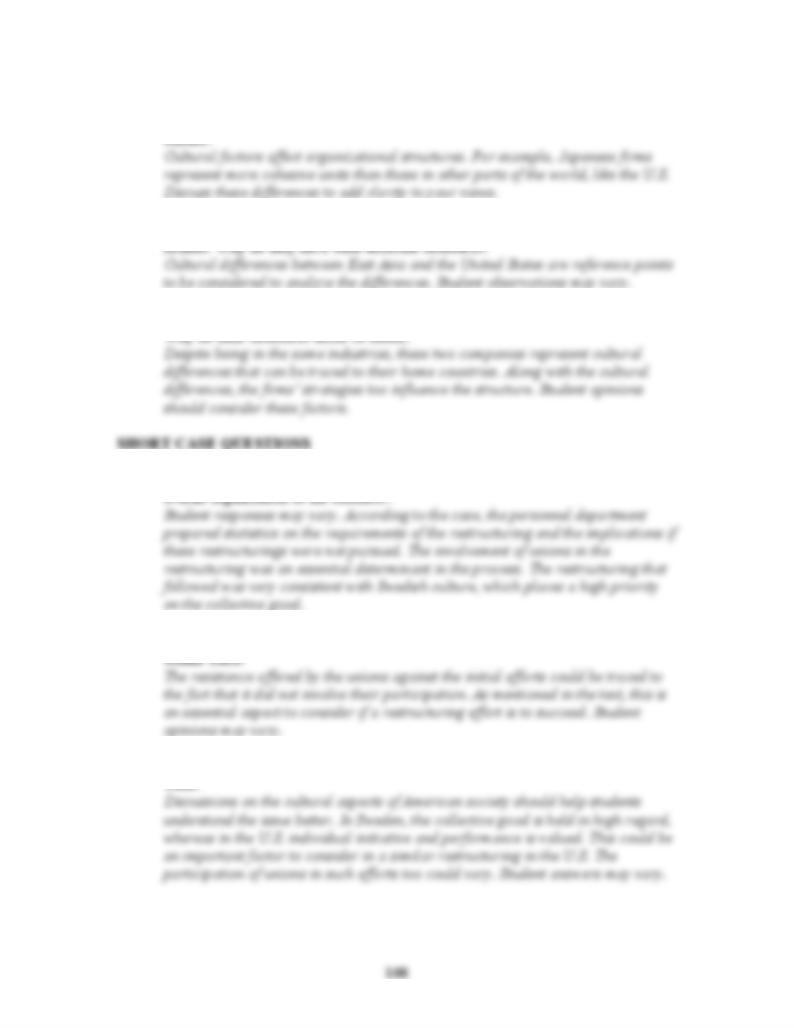
INTERNATIONAL MANAGEMENT Chapter 13: The Structure of the International Firm
2. Research a large multinational firm in a country other than your own. Can you
find any substantive differences in the organizational structure that may be due to
3. Research and contrast the organizational structure of McDonald’s and YUM!
4. Research a large Korean firm like Samsung and its chief European rival Philips.
1. Why do you think Telia had to restructure employee hierarchies in addition to the
2. Why do you think there was such a lapse in time between the two restructurings
3. Would a U.S. firm be able to restructure its employees in the same manner as